
Everyone who writes about movies for a living eventually comes to a point in their week or their year or whatever when watching movies stops feeling like fun. Pity me, I know. But especially lately, it can often feel like I’m slogging through some visually drab chore on the off chance something about the content of it will grab me, or worse, just to confirm what was already obvious from watching a few frames. I watched The Card Counter this past week and, granted, that’s a film set entirely in gross casinos, but it had all the visual appeal of surveillance footage. Watching it actually made me depressed and queasy (by design, probably, but also not in an enjoyable way that made me want to keep watching).
Rewatching Paul Thomas Anderson films for this piece was like an oasis in the desert. I’ve done a bunch of these filmmaker ranking posts now and had by far the most fun rewatching Paul Thomas Anderson’s movies. It’s fun to argue about the themes, the characters, the stories in his movies, but you can watch five solid seconds of any single one of his films and know immediately that the person who made it is a real filmmaker. At the basic root of it, his movies make you want to keep watching. You can probably count the number of directors who can do this on one hand. I think this is less because he’s a brilliant visual designer and his movies are always shot beautifully (though they absolutely are), but because he has such a sharp sense of story that even the most minuscule chunk of his films are stories unto themselves.
Does anyone else shoot a prettier movie? Does anyone else balance capital A “Art” and broad comedy so well? Does anyone else have a better eye for actors? John C. Reilly, Philip Seymour Hoffman, Joaquin Phoenix, Vicky Krieps, Katherine Waterston, Philip Baker Hall, Luis Guzmán… not only does no one else cast movies better, Paul Thomas Anderson seems to see things in actors that other people don’t. Before PTA, Mark Wahlberg was a model, a novelty rapper, the brother of a guy in a boy band — essentially the Aaron Carter of the early 90s. Paul Thomas Anderson cast him in a lead role and basically turned him into a movie star overnight (for better or worse).
Licorice Pizza, out in New York in LA last week, expanding nationwide on Christmas Day, seems to further all of PTA’s favorite themes, with an added personal twist that feels almost like the key to understanding his entire catalogue. What better time for a look back at all his movies? Especially when so many are available to stream. At a time of year when I’m trying to forcefeed myself (frequently terrible) awards films, rewatching Paul Thomas Anderson movies feels like a vacation.
9. Magnolia (2000)

I remember always taking the “anti” side of the debate on Magnolia, back in my “budding obnoxious film snob” days (luckily most of my friends were also in this demo so I didn’t get my ass kicked as much as I probably deserved to). Even then, there were things about Magnolia I enjoyed. Frank TJ Mackie the male dating guru is to this day probably Tom Cruise’s finest performance. The frogs in the end were also very cool, and it wasn’t until a recent rewatch that I discovered that the scuba diver who died getting scooped up by a fire fighting plane in the beginning of the movie was played by Patton Oswalt. Who knew!
Yet Magnolia remains a movie with a lot of things in it to enjoy, but not my favorite PTA on the whole. It was also hard for that first impression of it to evolve — Magnolia tends to discourage a rewatch on account of being three damned hours long. It feels a bit like a young PTA, hot off Hard Eight and Boogie Nights, had the budget and the clout to use every formalistic trick in the book on a movie that could be as idiosyncratic as he wanted. So he went a little nuts, with zoom shots and atmospheric music and post-dialogue camera moves that he’d used much more sparingly in Hard Eight.
As a result, Magnolia, while still a great movie, feels like it belongs to the “cool, indie auteur” period of late nineties cinema maybe more so than it belongs to Paul Thomas Anderson specifically. Anderson leaned into the destiny and cosmic coincidences theme, which makes it feel a little impersonal. It feels more like a trick he wanted to use than some idea about human nature or a notion of himself that he wanted to explore. But hey, getting a little overly self-indulgent early in a career is probably a good way to learn restraint.
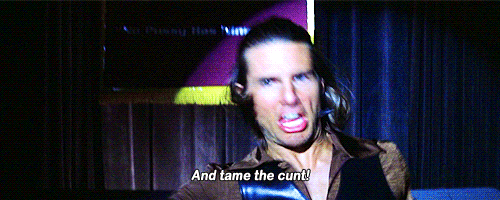
8. Phantom Thread (2017)

Phantom Thread is a pretty good art film that would’ve made a name for any up-and-comer. But this was Paul Thomas Anderson, dammit, and I suppose I expected more. The last time PTA and Daniel Day-Lewis got together, DDL beat Paul Dano to death with a bowling pin. In Phantom Thread, he plays Reynolds Woodcock, a fussy dress designer who turns down a pastry on account of he doesn’t like “snodgy” things. The closed captions (and some of the commenters in my original review) will try to convince you he says “stodgy,” clearly biased towards actual words, but I’m biased towards my goddamned ears and he clearly says “snodgy.” I have rewound.
PTA pulls off many things in Phantom Thread that only a virtuoso director truly could, like making moments of quiet passive aggression feel like operatic arguments, and depictions of quiet annoyance — the scraping of a knife on toast! — that feel like broad comedy. Phantom Thread has incredible performances and plenty of great scenes. The rich drunk woman Woodcock seems to hate is a fascinating interlude, and there’s a reason everyone remembers Alma light-poisoning Reynolds with mushrooms. Still, Phantom Thread leaves me cold in comparison to his other films.
Anderson seemed to want to prove that he could be as good at directing repressed British toffs as he is at directing fast-talking American hucksters and big-dicked himbos. Maybe he is, but that doesn’t mean I’m going to enjoy the former nearly so much as the latter. Give me the coarse, crude PTA, there are enough refined, highbrow understated art film directors out there already. There’s also a basic lack of grounding in Phantom Thread in contrast to Anderson’s American-set movies, which are usually so rich in time/place/cultural context detail. Which might be a choice or might be a simple consequence of directing a movie set in a different country.
[Currently free with Prime Video]
7. Hard Eight
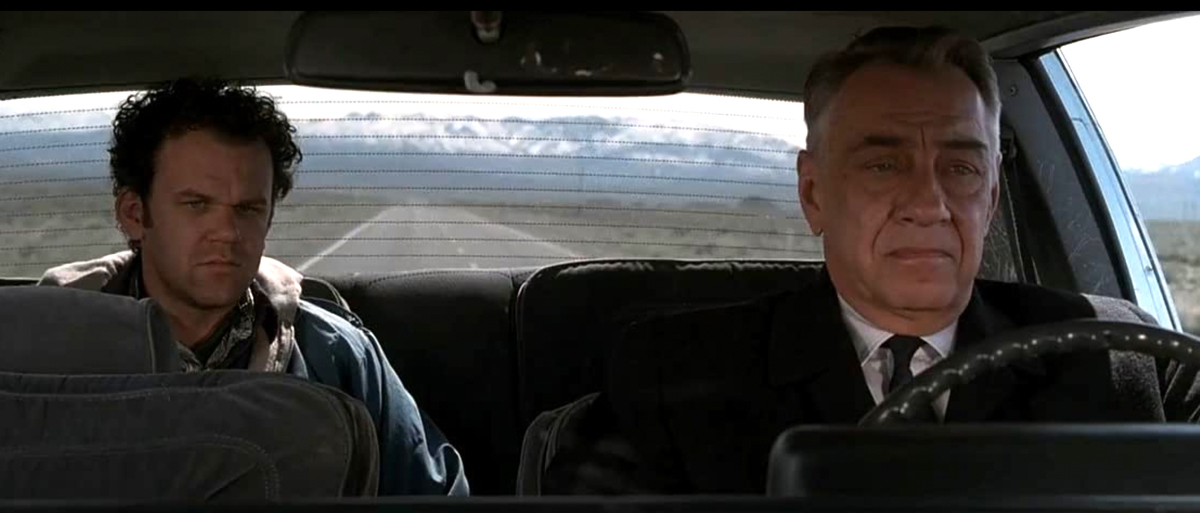
Hard Eight, Anderson’s first feature based on his own short film, feels very much like a first feature based on a short film. Albeit a very good one. Does it seem like first features are more personal these days? Back in the nineties (when there was a much hotter market for indie movies directed by people trying to become the next Bryan Singer or Quentin Tarantino) they seemed to tend more towards genre exercises and pop thrillers. The conception of “famous director” was probably a lot narrower than it is now.
So it is Hard Eight feels sort of like your standard 90s indie, with a collection of stock characters — the old hand who’s seen some shit (Philip Baker Hall), the hooker with a heart of gold (Gwyneth Paltrow), the angry young man without a father (John C. Reilly, and the predatory hustler (Samuel L. Jackson) — in a sort of classic film school narrative about lost children looking for fathers and absent fathers looking for redemption. It’s about John C. Reilly’s character finding a father figure in Philip Baker Hall’s character, in which you spend most of the movie wondering just what the hell Philip Baker Hall’s character is getting out of all of this, and then in the third act you find out.
That’s basically the whole movie. Yet in Paul Thomas Anderson’s hands (he was just 26 at the time), this story with just four actors, a handful of locations, and barely any music fairly sings. It helps that those four actors were some of the best in the world, and without it the world may never have realized just how brilliant John C. Reilly could be (still one of the most underrated actors out there). It’s also downright gorgeous, clearly a PTA trademark even when working with a tiny budget. And at an hour 42, it barely cracked the 100-minute mark. Take a lesson, aspiring indie film directors.
6. Punch Drunk Love (2002)
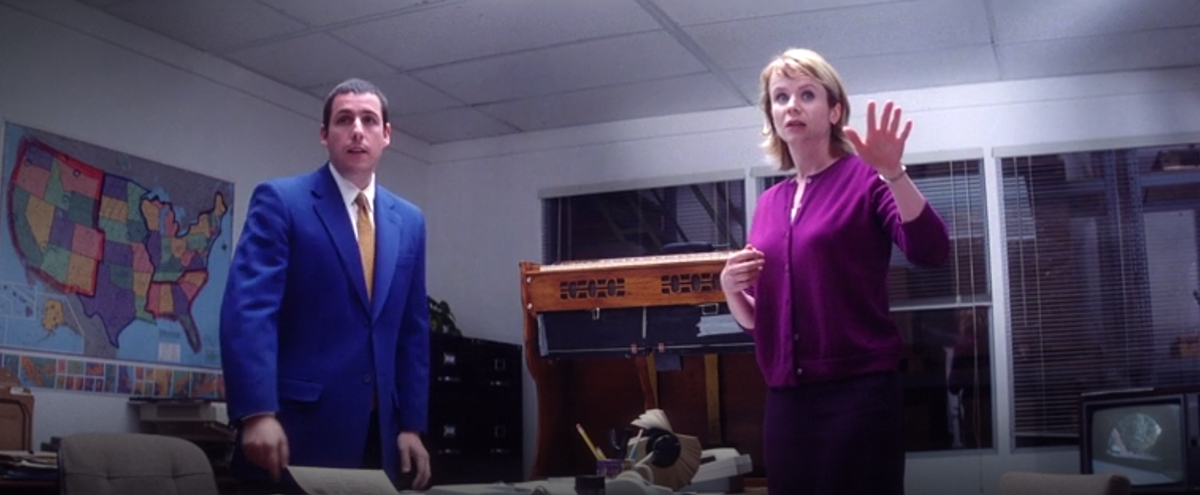
Punch Drunk Love is a weird little movie, and I mean that in the nicest way possible. It might be the best weird little movie ever made. Anderson’s first movie after Magnolia, which was probably his most self-indulgent and certainly his longest, Punch Drunk Love is essentially arthouse The Waterboy. When it came out I remember the hook being the chance to see Adam Sandler in a non-Adam Sandler movie. Which is funny because rewatching it now, it feels very much like an Adam Sandler movie. Sandler plays the stunted everyman whose impotent rage becomes his superpower, which he uses to save his family and get the girl, just like every Sandler movie ever. Punch Drunk Love is just Paul Thomas Anderson’s take on an Adam Sandler movie, like a Michelin star restaurant doing a riff on an In N Out burger. Punch Drunk Love is almost like the id of other Adam Sandler movies, a brilliant dissection of them. It’s also one of Sandler’s funniest movies and funniest performances.
The Sand Man plays Barry Egan, a repressed oddball who also has various hustles he’s running, from his plunger business to his idea to get unlimited travel by capitalizing on a frequent flyer promotion by buying up all the cheapest Healthy Choice items (which turn out to be pudding). In Barry you can see the seeds of yet another Andersonian huckster character, a sort of grown up, introverted version of Gary Valentine in Licorice Pizza. Barry Egan isn’t a kid, but he’s a younger sibling, and wears his new blue suit the entire movie, deliberately giving the impression of a kid wearing his father’s suit. (Though to be fair, Adam Sandler always looks like that, I’m not sure I’ve ever seen him in clothes that fit).
Barry’s constantly being hectored and diminished by his seven sisters, including Elizabeth, played by Mary Lynn Rajskub. Meanwhile, strange things keep happening to him, like witnessing a violent car wreck just before discovering a harmonium left on the street. Later he calls a phone sex line run by a family of Mormon criminals out of the back of a mattress store in Utah, who try to extort him. Surely one of the strangest storylines ever conceived. But Punch Drunk Love is one of those movies where I don’t entirely care why things are happening or what the story is building towards, it’s just so charmingly “off” that I’m content to float along. It has the energy of a quirky short, and somehow maintains it for the entire movie. It’s also 95 minutes long. Punch Drunk Love might not stick with me quite like some of PTA’s other movies, but it makes me smile from opening credits to closing.
Also, and I know pointing this out risks making me seem like a creep but I’m too curious not to: I couldn’t help but notice Emily Watson’s prominent nipples in she and Sandler’s meet-cute scene. Which was very reminiscent of Alana Haim in a similar scene in Licorice Pizza (I mean come on, it’s even in the poster). I can’t help but wonder: is this something Anderson discusses with the actresses beforehand? Is it a discussion between the costume designer and cinematographer? Are there prosthetics involved? He’s so intentional as a filmmaker that I can’t help but ponder the logistics of prominent nipples. Whatever planning leads up to it feels like it would make a great scene in a PTA movie.
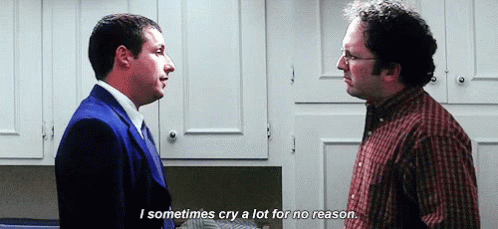
5. Inherent Vice (2014)
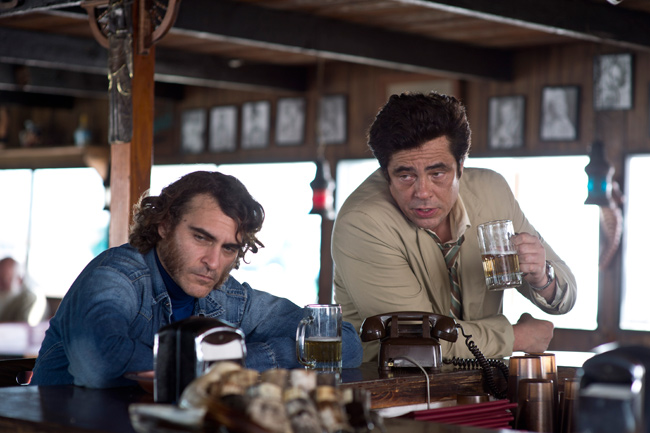
Inherent Vice is what I would call a “difficult masterpiece,” which is a weird thing to say about Paul Thomas Anderson, arguably the most crowd-pleasing, popcorn-friendly arthouse director who ever lived. His movies are virtually never difficult to watch. What I mean is that Inherent Vice is deliberately sort of a shaggy dog story. It’s not one of those movies where every scene has a functional purpose in the plot, where characters only show up early in the film because they’re going to be important in the story later on. It’s chaotic by design, so it kind of hurts your brain.
The middle section of Paul Thomas Anderson’s 1970s trilogy, Inherent Vice follows stoned private detective Doc Sportello (Joaquin Phoenix) as he tries to track down an ex-girlfriend at the height of seventies paranoia. Inherent Vice is an adaptation of a Thomas Pynchon novel, meaning it often feels like it’s winning a contest with itself to invent the most silly-sounding names and incorporate the weirdest story vignettes. It’s a depiction of the Rome-after-the-fall seventies, the seventies full of cultism, drug-induced dissociation, and secret societies. It’s the sand under the surf after Hunter Thompson’s “high and beautiful wave” of mid sixties optimism broke and rolled back. It’s set at a time when the culture felt inexorably broken and everyone seemed to be going at least a little insane — in fact it reminds me a lot of today. We don’t have cults and communes, we have magic crystals and crypto and NFTs. Frankly, Paul Thomas Anderson might’ve been a little ahead of the curve in 2014.
Inherent Vice is also hilarious and quite possibly the sexiest, most beautiful movie ever made. With the right combination of chemicals I could probably be convinced that it’s one of the greatest movies ever. Who is the greatest Paul Thomas Anderson actor? Joaquin Phoenix, Philip Seymour Hoffman, John C. Reillly? Discuss.

[Available to rent on various services]
4. The Master (2012)
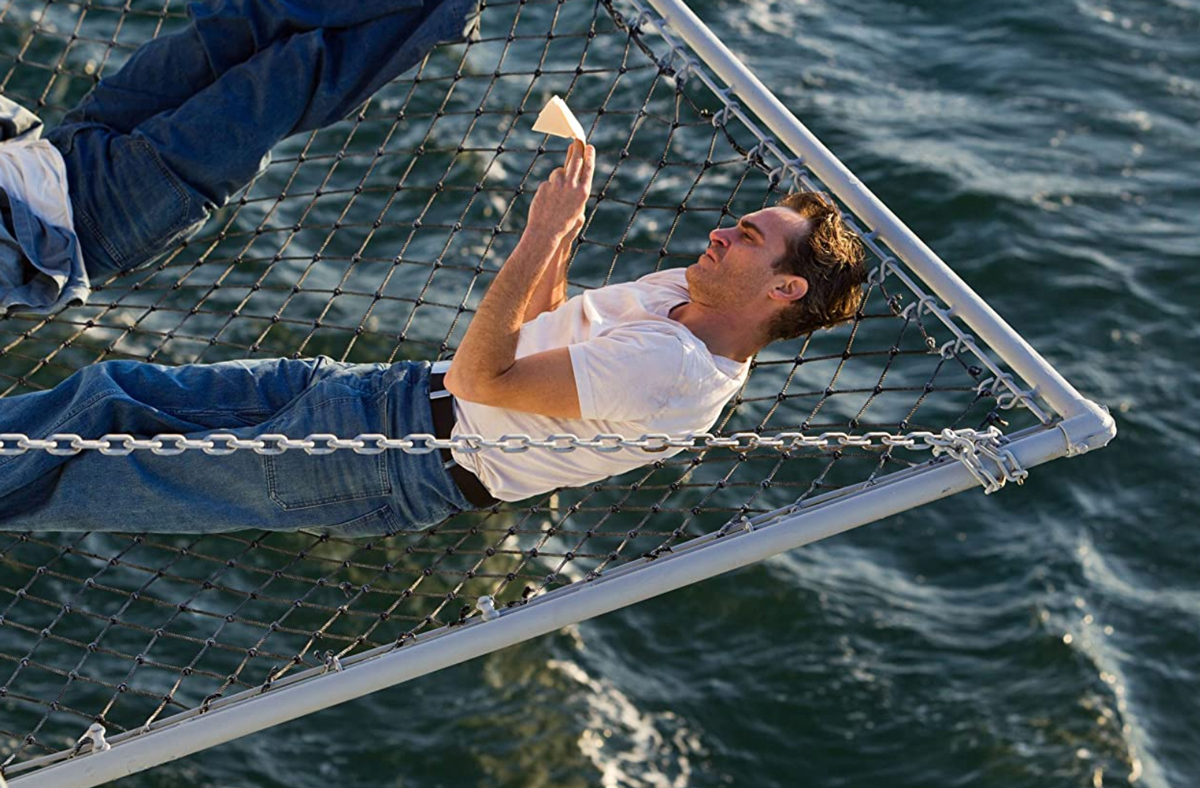
The Master is a lot like Inherent Vice in that it’s quite long, meditative, and slightly meandering. I don’t know always know where it’s going, but I also don’t really care. Philip Seymour Hoffman plays a fictionalized L. Ron Hubbard in one of his all-time greatest roles, with Amy Adams as one of his daughters and Joaquin Phoenix as his main acolyte. It was shot and released entirely in 70 mm, another film so beautiful I barely even cared what happened.
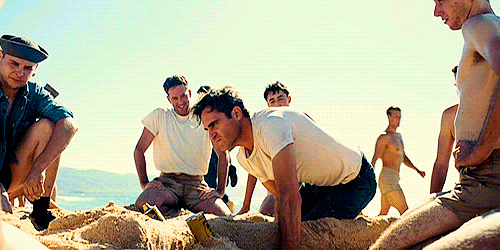
Joaquin Phoenix is one of the all-time could-watch-this-guy-paint-a-house actors and PTA probably the ultimate could-make-watching-grass-grow-exciting directors. Together they’re irresistible. I could’ve watched Joaquin Phoenix mix up cleaning fluid cocktails and made crude drawings of boobs and wieners all day. In fact, The Master‘s mixture of crudeness and beauty gets to the root of what makes Paul Thomas Anderson movies so enjoyable for me. Think Freddy Quell furiously masturbating on a beautiful beach somewhere shot in glorious 65 mm.
The Master is such a gorgeous, meditative film that I actually dozed off in the theater the first time I saw it. But I was smiling when I drifted off and smiling when I woke up a few minutes later. It’s a pleasant dream of a film.
3. Licorice Pizza (2021)

Just like Buster Scruggs did for the Coens or The French Dispatch did for Wes Anderson, Licorice Pizza seems to offer a road map to all of Paul Thomas Anderson’s various obsessions. It’s a love story, of sorts, between precocious 15-year-old former child actor Gary Valentine (a budding Dale Carnegie and emblematic of so many slick hucksters in the PTA-verse) and emotionally stunted, henpecked-by-her-big-Jewish-family 25-year-old Alana — in many ways a gender-swapped version of Sandler’s character in Punch Drunk Love.
The cast of Licorice Pizza is full of famous names — Haim, Hoffman, Giacchino, DiCaprio — to the point that you wonder whether PTA was trolling when he made a love story between an adult and a minor and cast it with the hereditary Hollywood elite (neither here nor there, but “Gary Valentine” is also the stage name of Kevin James’ brother). But more to the point, PTA was doing what he’s always done: explore the blurry boundary between childhood and adulthood. He explores this boundary with Gary and Alana, but also with the porn industry, with the 1970s, with Scientology, with John C. Reilly’s character in Hard Eight… Plumbing transitional awkwardness for laughs is kind of PTA’s whole deal.
Meanwhile, he does a similar thing in Licorice Pizza as when he cast Mark Wahlberg in Boogie Nights. This time it’s with Alana Haim in the lead (whom PTA had directed in a bunch of Haim videos) opposite Cooper Hoffman (Philip Seymour’s son), both in their feature debuts. I don’t know if either of them will become movie stars but they sure feel like it in Licorice Pizza.
1. (Tie) Boogie Nights (1997)/There Will Be Blood (2007)

Yes, I know a tie at the top is the coward’s move. Yes, I also did a tie in my Wes Anderson rankings. Yell at me, I deserve it! But what can I say, once again I simply can’t choose. Boogie Nights is the best major key PTA movie and There Will Be Blood is the best minor key PTA movie. They’re both just about perfect in their own distinct ways. How could I choose? Why would I? (These are rhetorical questions, by the way, no need to answer them).
Boogie Nights is one of the all-time great movies that is both a prestige-y awards film (three Oscar noms) and a cult comedy that I can watch over and over, quoting scenes like Stepbrothers (or, probably more accurately, like Goodfellas). What’s your favorite scene? Philip Seymour Hoffman pathetically blubbering to himself in the car (“I’m so stupid!”)? Mark Wahlberg and John C. Reilly recording “You Got The Touch?” Mark Wahlberg talking to his prosthetic dick in the mirror?
That last one symbolizes a basic aspect of Paul Thomas Anderson as a filmmaker: that he enjoys grimy, provocative kitsch at least as much as introspective thought experiments and shoots them with equal care.
Boogie Nights has iconic comedy (see above), iconic sex (Heather Graham as roller girl), and iconic tragedy. Don Cheadle getting turned down for his stereo store loan and William H. Macy blowing his brains out at a party are two of the saddest scenes I can think of (the Philip Seymour Hoffman crying scene is sad but kind of too funny to be sad). It also has some of the queasiest foreshadowing outside of a horror film, if you remember the surreal scene at Alfred Molina’s drug den, one of the greatest “and that’s when the drug trip started to turn” scenes of all time. (Molina’s character was actually based on a real guy, Eddie Nash, a convicted drug dealer and money launderer who allegedly ran a racketeering operation for 25 years and probably masterminded the Wonderland murders, who freebased so much coke he eventually had to have a lung removed. His real story is pretty good too.). It’s pretty close to a perfect film.
[Boogie Nights on Hulu and Showtime]
Then you have There Will Be Blood, one of the most twisted, misanthropic, deliciously goth dark comedies of all time, starring Daniel Day-Lewis as one of the most foundationally American villains ever put to film. I don’t know that there has even been an opening scene more memorable than Daniel Plainview rooting through the entrails of the Earth. It’s almost like PTA wanted to prove that he was more than just the “vivid saturated colors guy” so he made a movie that consisted almost entirely of different shades of black — and succeeded wildly.
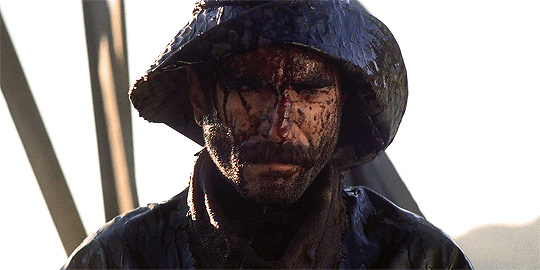
Daniel Plainview is probably my second favorite Daniel Day-Lewis-chewing-scenery-until-his-teeth-crack character behind Bill the Butcher, such a perfectly evil son of a bitch that you can’t help but love him. The first time I saw it was laughing so hard at him beating Paul Dano’s character to death with a bowling pin that I almost had to leave the auditorium (people were starting to stare). I still contend that that scene is a dark comedy masterpiece.
Consider also: at the time I’d only ever seen Paul Dano in Little Miss Sunshine, a sullen role that he seemed Wiley Wiggins-in-Dazed-And-Confused-level bad in. Then he showed up in There Will Be Blood barely a year later and looked like an Oscar contender. As always, PTA seems to have a gift for seeing things in actors that other people just don’t. I certainly didn’t. There Will Be Blood is simultaneously hilarious, sad, terrifying, and speaks to something unsettling in the American character. It’s an art movie that also has shlock, full of trailer-ready moments (I DRINK YOUR MILKSHAKE!) that somehow don’t come off cheesy. It might be the first truly great film of the 21st Century.
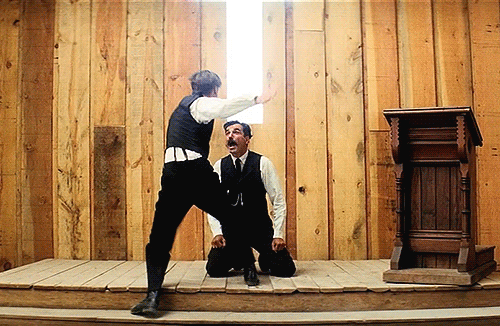
[There Will Be Blood on Netflix]
Licorice Pizza’ opened in select theaters on November 26. It expands nationwide December 25th. Vince Mancini is on Twitter. You can access his archive of reviews here.
